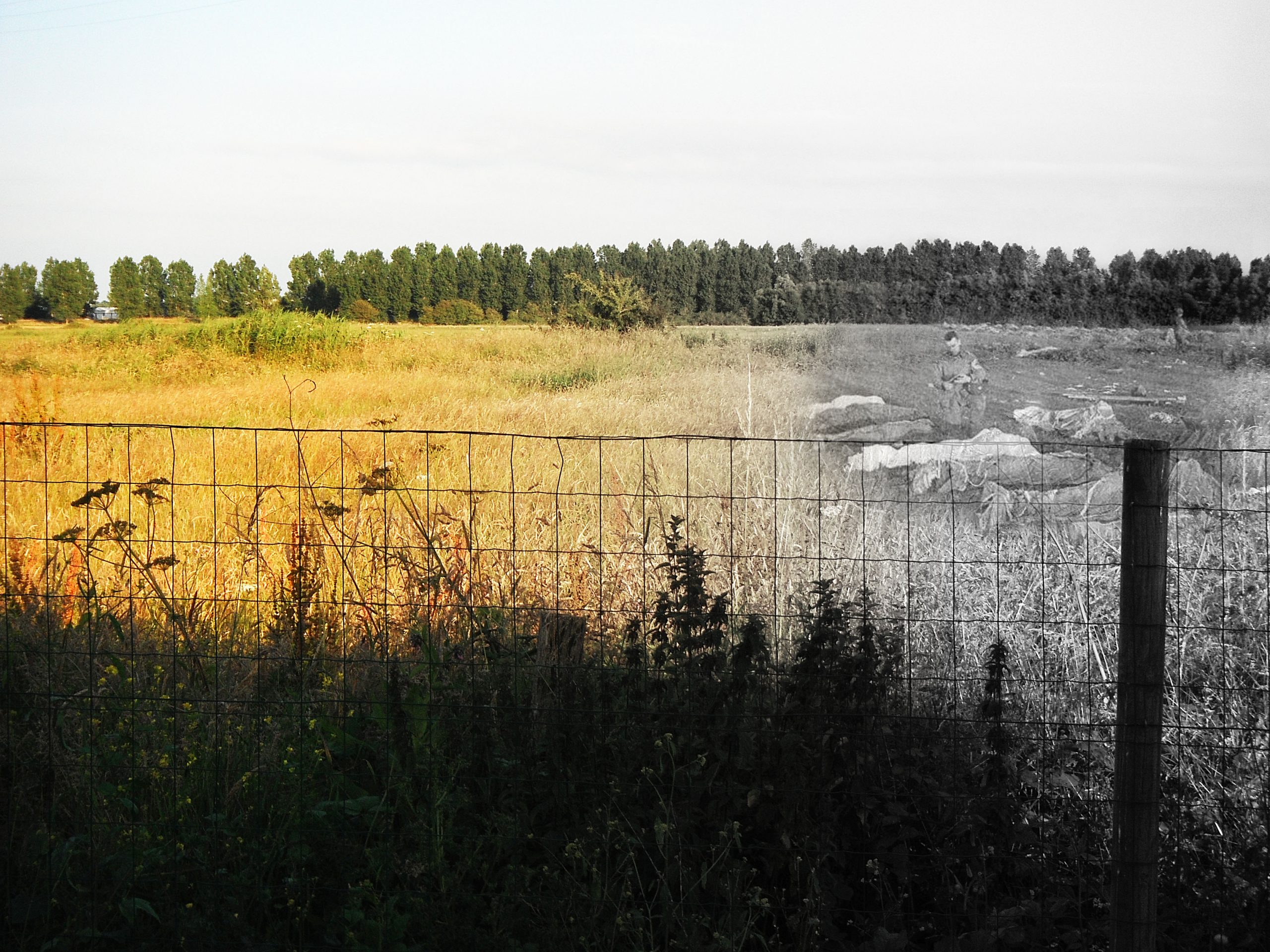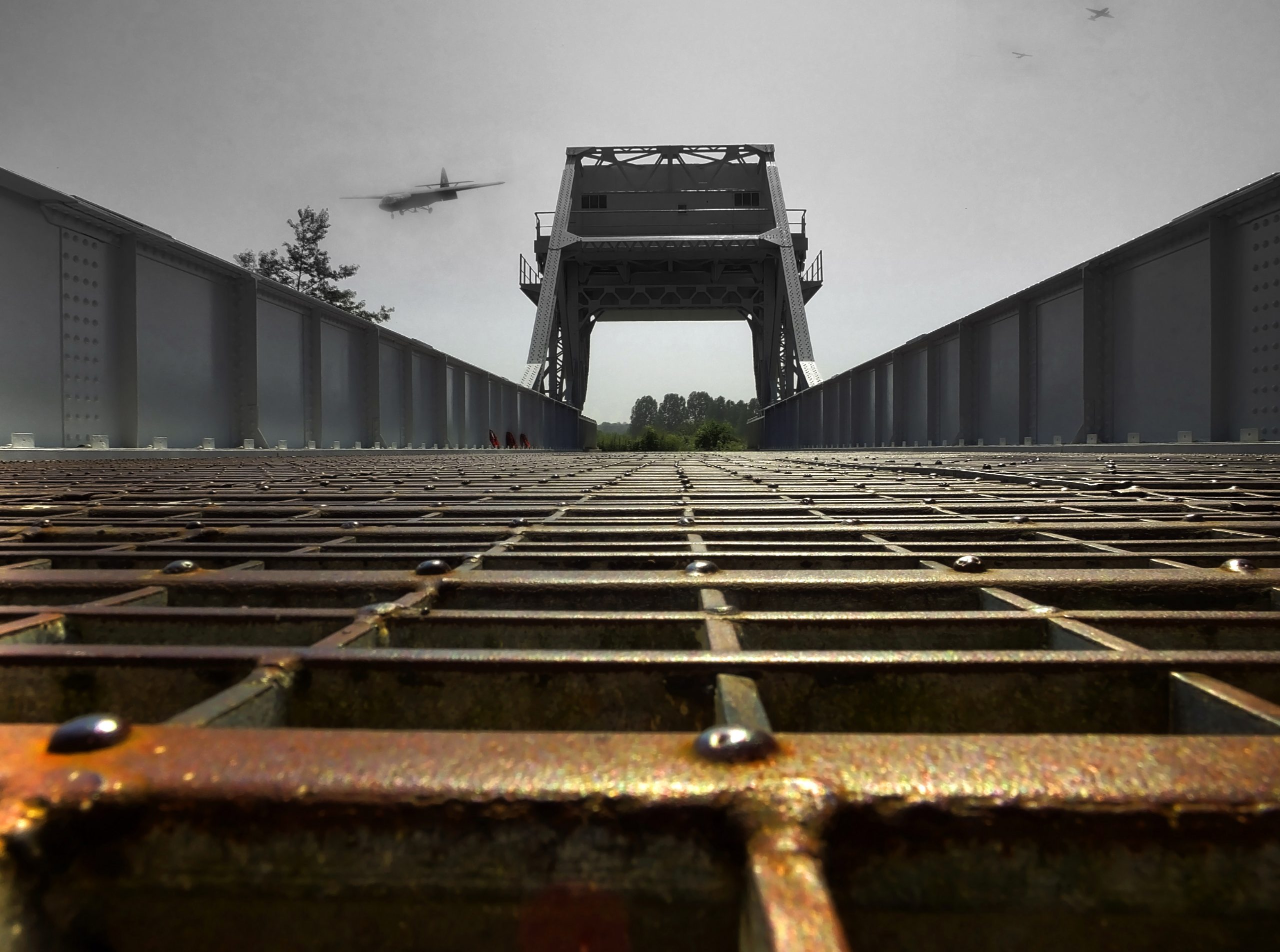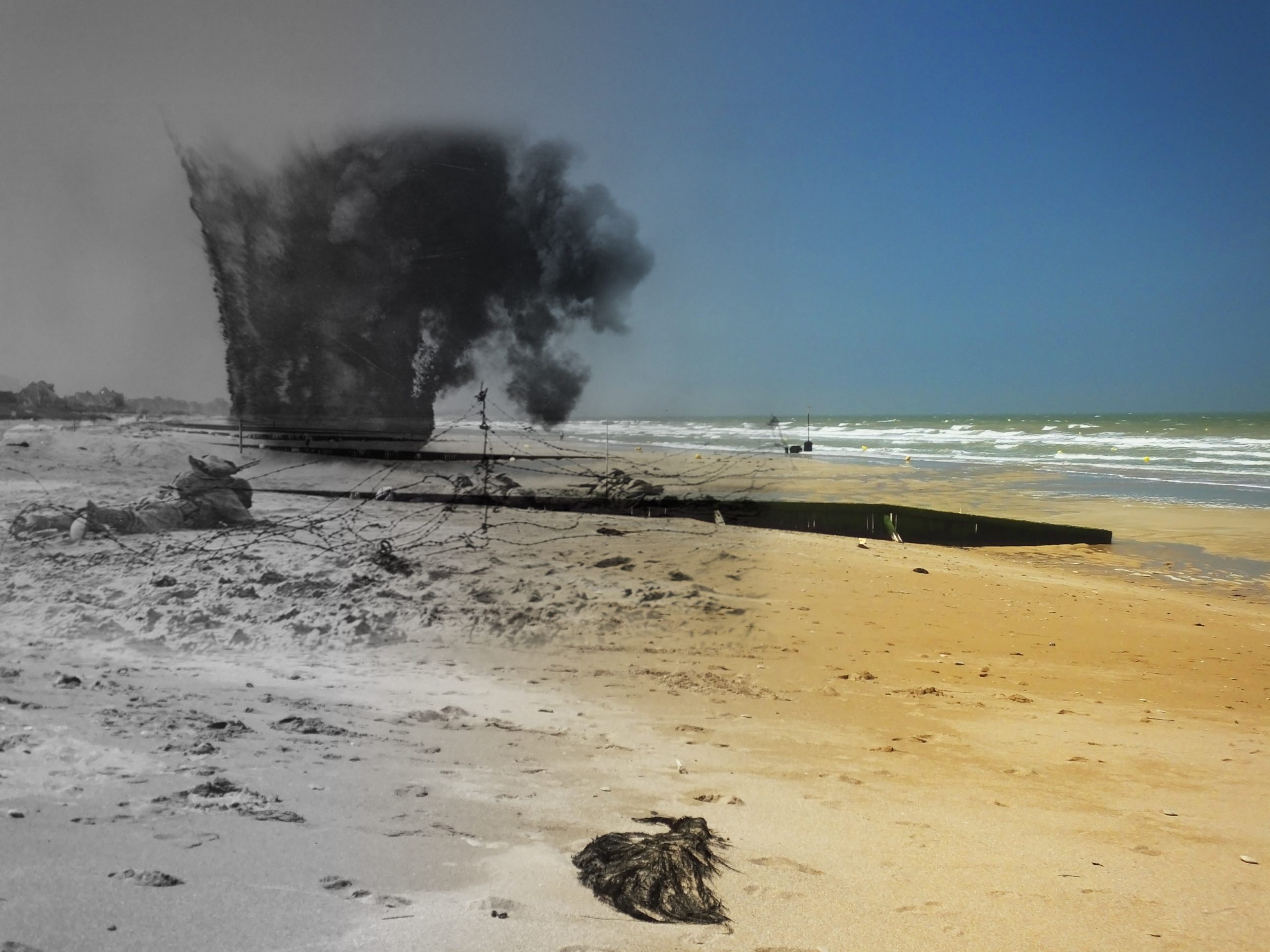Normandy, France, is filled with beautiful beaches and small, bustling towns. Seventy-six years ago, however, a different scene would be witnessed. World War II was in full rage. France was under Nazi Germany’s suppressing occupation. Its grip on Europe was strong, relentless, and seemed almost impossible to break. It would take an assault unlike any the world had seen in order to penetrate their defenses, weaken the German forces, and liberate the French nation. And that assault is exactly what would come on June 6, 1944. D-Day would begin the downfall to the tyrannical European oppression of Adolf Hitler and his Nazi party, and become a defining moment of the 21st century.
In June 2019, The Mariners’ Museum and Park commemorated the 75th anniversary of D-Day. It was a huge success. More than 1,100 visitors came to the Museum to hear about the actions that took place. It was an emotional day as visitors shared personal stories or stories about their loved ones who had served that day. We brought out several images and objects from our Collection. We created a hand-drawn and painted 14’ x 20’ map showing the shores of Normandy and the five beaches of the assault – Gold, Juno, Sword, Omaha, and Utah. We labeled pieces of the different Allied Forces divisions and moved them throughout the map to show the scale of the assault and the amount of area that needed to be captured. Lyles Forbes, Vice President and Chief Curator has had the opportunity to visit Normandy. He created several pictures, many seen in this post, that blend images from present day scenes and photos from the past, so that visitors could see a correlation of what the places look like today versus when the invasion was taking place.
Because the Museum is currently closed due to the COVID-19 pandemic, we are unable to recreate this program this year. Seventy-six years later, the accounts of what took place that day are still heavily embedded in our minds. It remains the largest seaborne assault in history. So here is a synopsis of D-Day and the Normandy invasion.
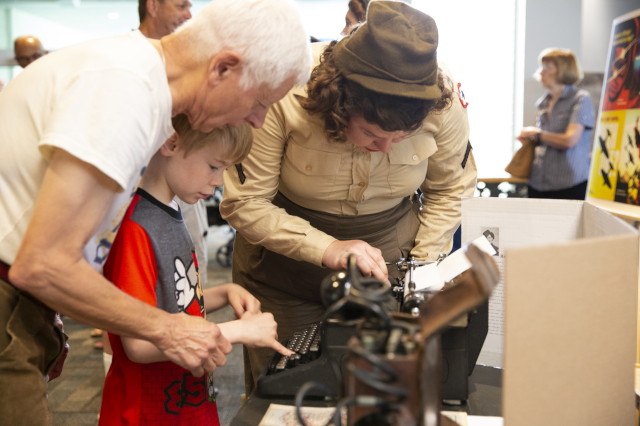
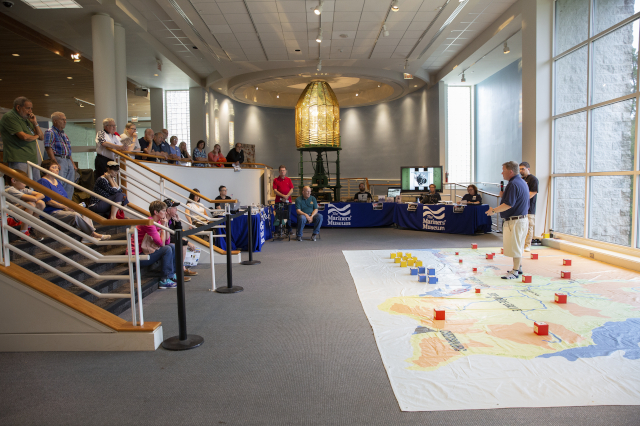
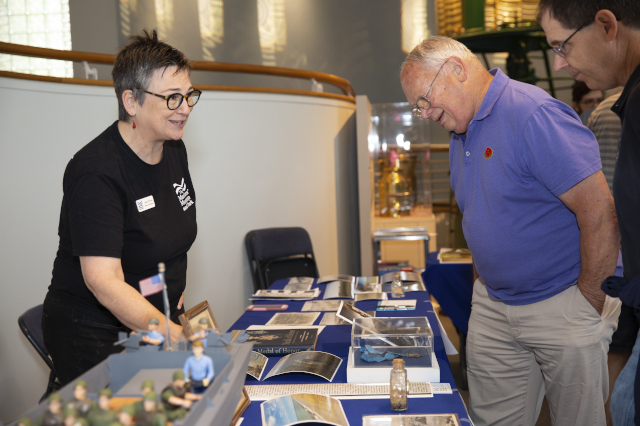
Airborne Landings
In the early morning hours, a dim glow of the full moon’s light showed through the clouds as high tide rolled in over 50 miles of the French coastline. Months of planning by the Allied forces of the United States, Great Britain, and Canada were finally in motion. They called it Operation Overlord. Many things went wrong, not just that day, but even during the days leading up to it. The original invasion was set for several days prior. Yet bad weather pushed back the date. Knowing they needed the light of a full moon, they had no choice but to proceed on June 6. It was now or never. Even still, weather conditions were not ideal.
The resolve and determination of more than 160,000 Allied troops were about to be tested. Several thousand vessels made their way across the English Channel to the French beaches. The naval portion of the invasion plan was code named Operation Neptune, and failure was not a possibility. But D-Day did not begin with the storming of the beaches. The German enemy had a stronghold in the surrounding area. Key spots needed to be secured by Allied troops if the amphibious assault had any chance of success. That’s why hours before, shortly after midnight, airborne landings began.
In order to minimize or slow the enemy’s counter-attack on the amphibious forces, airborne troops first descended into designated landing areas around midnight. Their goal was to secure key points and open roadways throughout the area by dawn, providing the upcoming amphibious assault a chance to succeed. Paratroopers of the U.S. 82nd and 101st Airborne Divisions, the British 6th Airborne Division, the 1st Canadian Parachute Battalion, and other attached Allied units were involved. More than 13,000 paratroopers rained from the sky into heavy enemy territory, many shot down and killed before reaching the ground. Others landed in the water, and due to their heavy equipment, drowned. Several received injuries from hitting buildings, and from the impact of landing from a jump only 700 feet high. Many found themselves blown off course and scattered throughout the French landscape.
For those who made it down alive, they had only yet begun to achieve their mission. The airborne assault did not initially seem very successful. Yet, it created enough distraction and confusion for the German enemy that by the time dawn neared, the second part of the plan could begin.
The Beaches
Utah, Omaha, Gold, Juno, Sword. Codenames for the five beaches to be stormed by Allied troops. British forces were responsible for Sword in the center and Gold to the east. The Canadians led at Juno between the British forces. American forces would be on Omaha and Utah to the west. The stage was set, plans were made. Yet no one could fully be prepared for what would take place on that day. Picture in your mind a cloudy sky during the early morning hours, just before the sun begins to peek above the horizon. This will give you but a small idea of how much, or little, light the men would have as the battle began. More than 6,000 ships and amphibious assault vessels carrying more than 150,000 troops made their journey across the English Channel. By 6:30 a.m. the invasion starts.
Jump. Swim. Run. Crawl. Jump into the frigid waters. Swim through pounding surf. Run across the thick sand. Crawl to the coverage of the dunes and cliffs. Jump. Swim. Run. Crawl. Thousands of men set off, plunging into cold, rough waters with up to 80 pounds of equipment attached to them. The enemy immediately begins firing heavily into the oncoming raid, killing thousands of Allied soldiers, some before even making it out of their vessel.
Getting off the amphibious craft was but a small victory for the soldiers. They still needed to make their way through 200 yards of the violent high tide surf. Here, take another moment to really understand this picture. Two hundred yards: the equivalent of two football fields in some of the most brutal conditions one can – or maybe cannot – imagine. And still, you’ve only made it part of the way. Once the soldiers finally make it onto shore, there are another 350 yards to go, still under heavy fire, before reaching the beach head and hopefully some coverage. Each beach had its own challenges:
American forces:
Utah Beach was five miles wide, and the westernmost of the five beaches. Four thousand troops and 1,700 motorized vehicles had landed at Utah with surprisingly few casualties—fewer than 300 men (not including paratroopers).
Omaha Beach was six miles wide, and the largest of the five beaches. Heavy seas, underwater obstacles, and intense enemy fire destroyed many craft, causing high casualties even before the assault battalions reached shore. The Americans suffered 2,400 casualties at Omaha.
Canadian Forces:
Juno Beach was six miles wide total, but only three miles would be attacked by the Canadian 3rd Infantry Division. When they reached the beach, they were hit by a wave of firepower from German soldiers who had fortified the area immediately behind the beach. Canadian forces at Juno Beach sustained roughly 1,063 casualties.
British forces:
Gold Beach is situated in the middle of the five Allied landing beaches and was approximately five miles wide. Four hundred British soldiers were killed, wounded, taken prisoner, or reported missing in the shock of the initial assault. By the evening of June 6, 25,000 men penetrated six miles inland, and linked up with the Canadians from Juno Beach on the left.
Sword Beach was the easternmost of the five Allied landing sites. It was five miles long, but only one mile was used for landing due to offshore reefs.
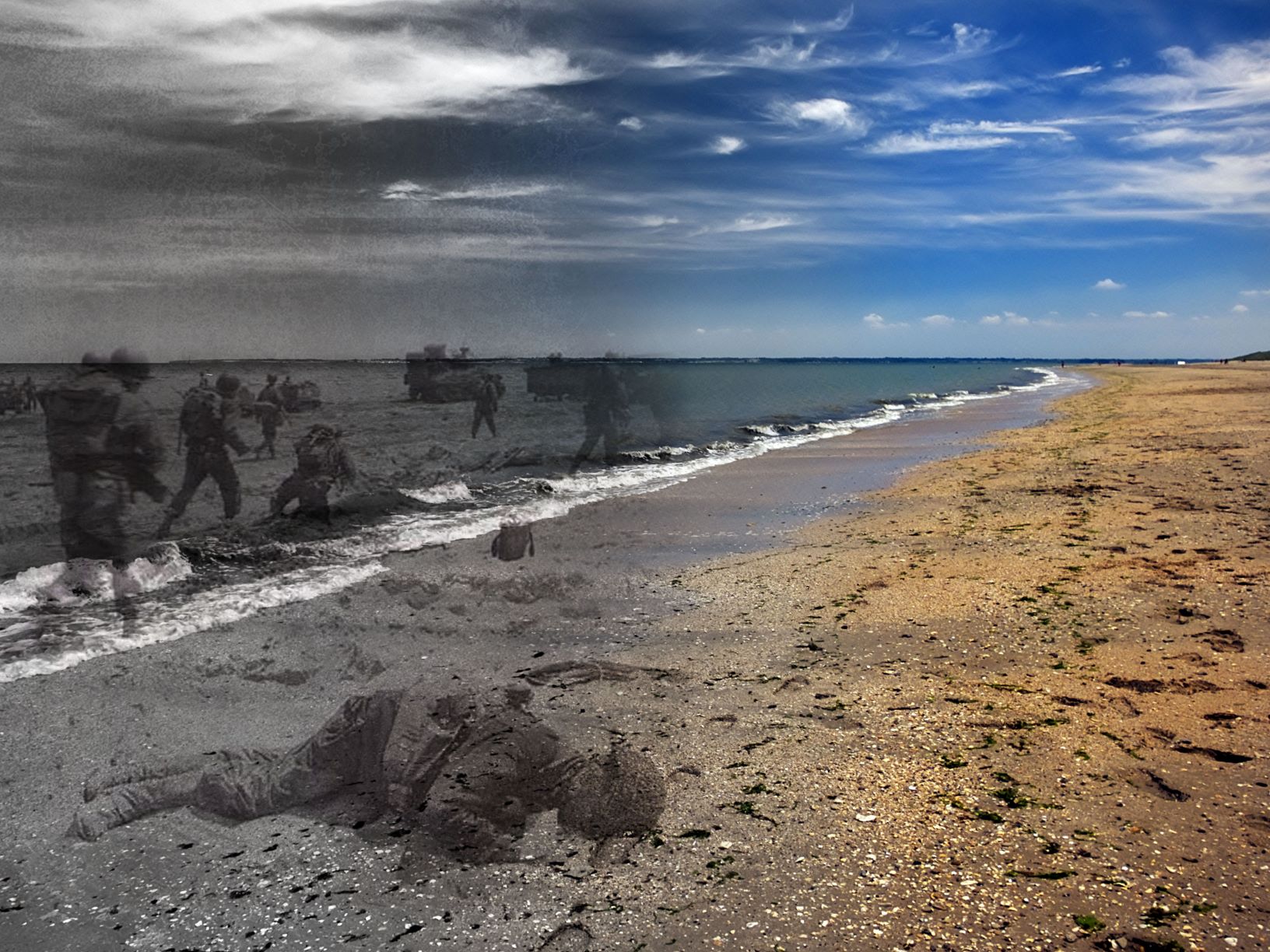

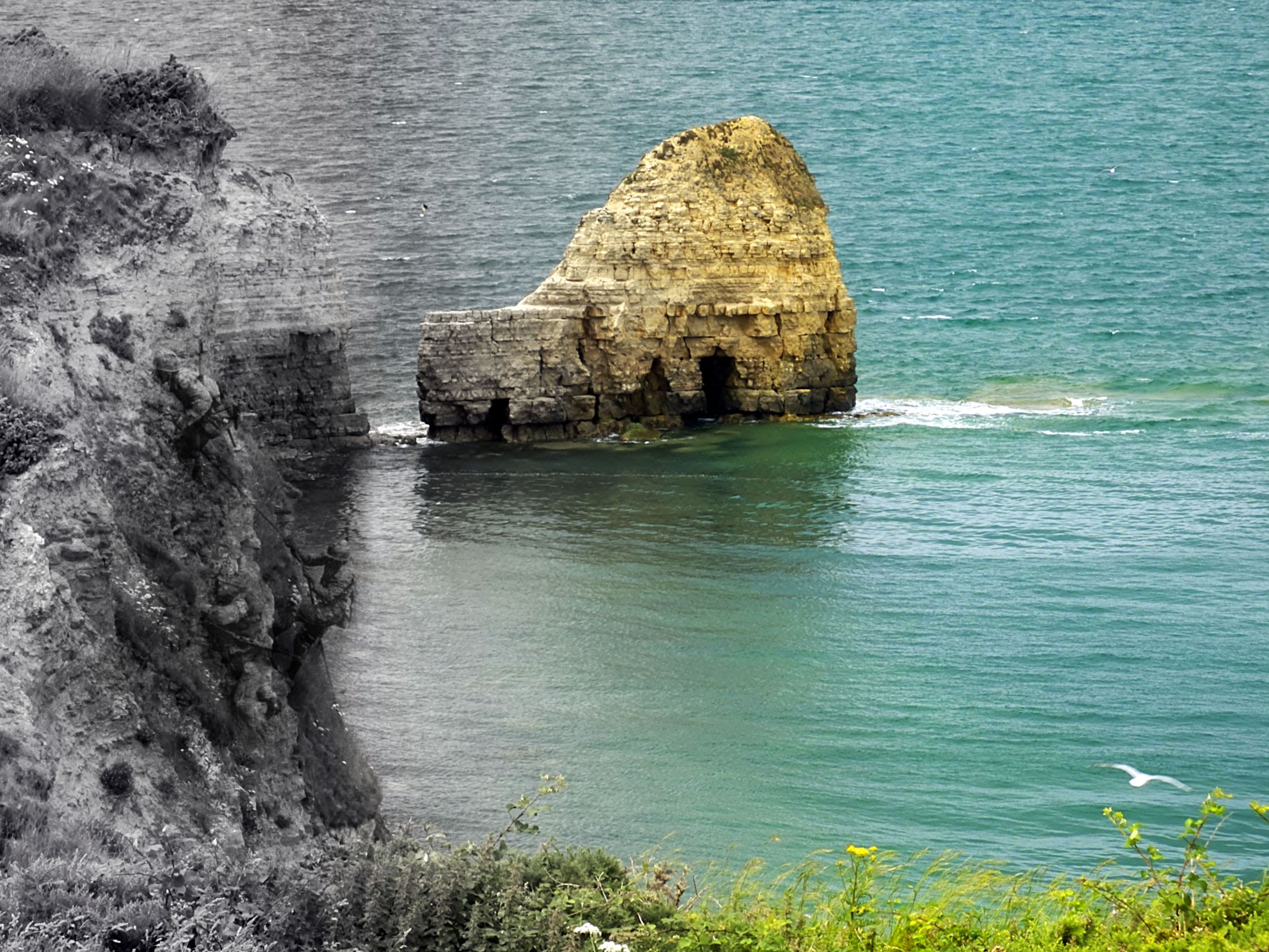
Legacy and Remembrance
This operation took more than a year of planning and backup contingencies. For something this important, all details needed to be checked, re-checked, and then checked again, and again. June 6 was not the original plan, but the Allied commanders knew that if they missed their opportunity, it would be several weeks before they could make Operation Overlord happen. Allied troops numbering 156,000 landed in Normandy when D-Day began. More than 11,500 aircraft took part in the landings. Almost 7,000 vessels were involved in the naval portion of Operation Neptune. And the fact most bitterly remembered – more than 4,400 Allied soldiers died on D-Day.
Casualties in the first few waves of men storming the beaches were high, especially on Omaha Beach. If you had viewed the initial scene, you may have thought it was all a failure. But all Allied parties, along with the French resistance on land, knew they could not fail. So they pushed through and onward. It would still be several weeks before France would be relieved of Nazi occupation and oppression. But the end of WWII and Hitler’s regime began on June 6, 1944. Call it D-Day. Call it Operation Overlord. Call it a sacrifice. Call it a victory. Because no matter what you call it, it was the day where the tenacity and valor of men were proven in a way that could not have been anticipated.
June 6, 2020, marks 76 years since this event took place. Seventy-six years have come and gone since the tide of WWII turned in favor of the Allies. It is important that we remember their fight and, more significantly, their sacrifice. The world would be a much different place if it were not for the fortitude and fidelity that took place on the beaches of Normandy 76 years ago.
